 |
 |
Our enthusiastic and extremely knowledgeable perennials team is here to answer your questions and help you choose the best perennials for your situation. There’s always something in bloom for sun, shade, butterflies, birds or deer resistance as well as a variety of bulbs for your space.
Stroll through our time-tested favorites and introduce yourself to the newest varieties. We garden with perennials too; we love them and it shows!
|
22 found, showing page 1 of 2
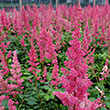
Magenta blooms. tolerates deer, heavy shade, & black walnut. USDA 3-8
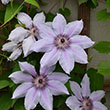
Showy pale pink flowes with carmine midstripe. Blooms on old and new growth. USDA 4-8

Height: 14 inches
Spread: 14 inches
Sunlight: full sun
Hardiness Zone: 4b
Group/Class: UpTick Series
Brand: Ball
Description:
A tidy, mounded variety, covered with striking, daisy-like yellow flowers with gold eyes and contrasting deep red-purple rings; tolerant of pests and drier soils; thriving in sandy and rocky soils; great as edging, or in containers; needs good drainage
Ornamental Features:
UpTick Cream and Red Tickseed is smothered in stunning yellow daisy flowers with gold eyes and a burgundy ring at the ends of the stems from late spring to early fall. The flowers are excellent for cutting. Its narrow leaves remain emerald green in color throughout the season.
Landscape Attributes:
UpTick Cream and Red Tickseed is an open herbaceous perennial with a mounded form. It brings an extremely fine and delicate texture to the garden composition and should be used to full effect.
This is a relatively low maintenance plant, and is best cleaned up in early spring before it resumes active growth for the season. It is a good choice for attracting bees and butterflies to your yard, but is not particularly attractive to deer who tend to leave it alone in favor of tastier treats. It has no significant negative characteristics.
UpTick Cream and Red Tickseed is recommended for the following landscape applications:
- Mass Planting
- Border Edging
- General Garden Use
- Container Planting
Planting & Growing:
UpTick Cream and Red Tickseed will grow to be about 12 inches tall at maturity, with a spread of 14 inches. Its foliage tends to remain dense right to the ground, not requiring facer plants in front. It grows at a medium rate, and under ideal conditions can be expected to live for approximately 10 years. As an herbaceous perennial, this plant will usually die back to the crown each winter, and will regrow from the base each spring. Be careful not to disturb the crown in late winter when it may not be readily seen!
This plant should only be grown in full sunlight. It does best in average to evenly moist conditions, but will not tolerate standing water. It is not particular as to soil pH, but grows best in poor soils. It is somewhat tolerant of urban pollution. This particular variety is an interspecific hybrid. It can be propagated by division; however, as a cultivated variety, be aware that it may be subject to certain restrictions or prohibitions on propagation.
UpTick Cream and Red Tickseed is a fine choice for the garden, but it is also a good selection for planting in outdoor pots and containers. It is often used as a 'filler' in the 'spiller-thriller-filler' container combination, providing a mass of flowers against which the thriller plants stand out. Note that when growing plants in outdoor containers and baskets, they may require more frequent waterings than they would in the yard or garden.

Creamy white flowers with butter-yellow centers. Long bloom cycle. USDA 5-9
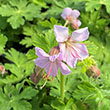
Pinkish-white blooms emerge from dark-pink buds. Bushy, open habit. USDA 4-8

Pink blooms with hints of purple. Mounded, spreading habit. USDA 4-7
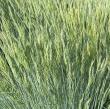
Blue foliage. Clumping. Heat tolerant. Semi-evergreen. USDA 4-8
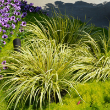
Height: 12 inches
Spread: 12 inches
Sunlight: full sun, partial shade
Hardiness Zone: 4b
Other Names: Sweet Flag Grass
Description:
Though it is commonly known as sweet flag, this is actually a grass, not an iris; iris-like foliage is fragrant and great for moist or boggy areas; it is gold and green-striped but appears mostly gold; doesn't like to dry out or the tips will burn
Ornamental Features:
Grassy-Leaved Sweet Flag is primarily valued in the garden for its ornamental upright and spreading habit of growth. Its attractive fragrant grassy leaves remain gold in color with prominent green stripes throughout the season.
Landscape Attributes:
Grassy-Leaved Sweet Flag is a dense herbaceous perennial grass with an upright spreading habit of growth. Its relatively fine texture sets it apart from other garden plants with less refined foliage.
This is a relatively low maintenance plant, and is best cleaned up in early spring before it resumes active growth for the season. It has no significant negative characteristics.
Grassy-Leaved Sweet Flag is recommended for the following landscape applications:
- Mass Planting
- General Garden Use
- Groundcover
- Naturalizing And Woodland Gardens
- Container Planting
- Bog Gardens
- Planting & Growing
Grassy-Leaved Sweet Flag will grow to be about 12 inches tall at maturity, with a spread of 12 inches. Its foliage tends to remain dense right to the ground, not requiring facer plants in front. It grows at a medium rate, and under ideal conditions can be expected to live for approximately 10 years. As an herbaceous perennial, this plant will usually die back to the crown each winter, and will regrow from the base each spring. Be careful not to disturb the crown in late winter when it may not be readily seen!
This plant does best in full sun to partial shade. It is quite adaptable, prefering to grow in average to wet conditions, and will even tolerate some standing water. It is not particular as to soil type or pH. It is somewhat tolerant of urban pollution. This is a selected variety of a species not originally from North America. It can be propagated by division; however, as a cultivated variety, be aware that it may be subject to certain restrictions or prohibitions on propagation.
Grassy-Leaved Sweet Flag is a fine choice for the garden, but it is also a good selection for planting in outdoor pots and containers. It is often used as a 'filler' in the 'spiller-thriller-filler' container combination, providing a canvas of foliage against which the larger thriller plants stand out. Note that when growing plants in outdoor containers and baskets, they may require more frequent waterings than they would in the yard or garden.

Variegated Grassy-Leaved Sweet Flag | White & Green Grass-Like Blades Arch Upward. Prefers Wet Soils. USDA 4-9
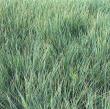
Height: 8 inches
Spread: 10 inches
Sunlight: full sun
Hardiness Zone: 3a
Other Names: Festuca ovina var. glauca
Description:
Heat and Drought tolerant once established, this selection produces beautiful bushy mounds of blue-gray grass-like foliage with tan colored spikes rising above in the summer; excellent performance in containers, borders and garden beds; low maintenance
Ornamental Features:
Boulder Blue Fescue is primarily valued in the garden for its interestingly mounded form. Its attractive grassy leaves remain steel blue in color throughout the year. The tan seed heads are carried on spikes from mid summer to late fall.
Landscape Attributes:
Boulder Blue Fescue is an herbaceous evergreen perennial grass with a mounded form. It brings an extremely fine and delicate texture to the garden composition and should be used to full effect.
This is a relatively low maintenance plant, and is best cleaned up in early spring before it resumes active growth for the season. It has no significant negative characteristics.
Boulder Blue Fescue is recommended for the following landscape applications:
- Rock/Alpine Gardens
- Border Edging
- General Garden Use
- Naturalizing And Woodland Gardens
- Container Planting
Planting & Growing:
Boulder Blue Fescue will grow to be about 8 inches tall at maturity, with a spread of 10 inches. Its foliage tends to remain low and dense right to the ground. It grows at a medium rate, and under ideal conditions can be expected to live for approximately 8 years. As an evegreen perennial, this plant will typically keep its form and foliage year-round.
This plant should only be grown in full sunlight. It prefers to grow in average to dry locations, and dislikes excessive moisture. It is considered to be drought-tolerant, and thus makes an ideal choice for a low-water garden or xeriscape application. It is not particular as to soil type or pH. It is highly tolerant of urban pollution and will even thrive in inner city environments. This is a selected variety of a species not originally from North America. It can be propagated by division; however, as a cultivated variety, be aware that it may be subject to certain restrictions or prohibitions on propagation.
Boulder Blue Fescue is a fine choice for the garden, but it is also a good selection for planting in outdoor pots and containers. It is often used as a 'filler' in the 'spiller-thriller-filler' container combination, providing a canvas of foliage against which the thriller plants stand out. Note that when growing plants in outdoor containers and baskets, they may require more frequent waterings than they would in the yard or garden.
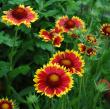
Prolific yellow-tipped red blooms. Compact. USDA 3-9
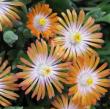
Amber & white blooms. Tolerates dry & poor soils. Succulent, compact, long blooming. USDA 5-10
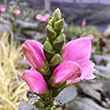
Uniquely shaped, hot pink blooms atop dark green leaves with a bronzy sheen.Best of moist or wet shade. Showy and long lived. USDA 4-9
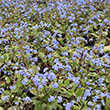
Distinctive silvery white leaves with a thin green rim around the leaf edges. Small, forget-me-not-like flowers of light blue with yellow centers. USDA 2-8
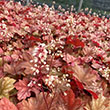
Plant Height: 9 inches
Flower Height: 14 inches
Spacing: 12 inches
Sunlight: full sun, partial shade, full shade
Hardiness Zone: 4a
Other Names: Coralbells, Alumroot
Description:
Striking foliage develops stunning hues of red, peach, coral and pale yellow; spikes of ivory bells in late spring to fall; amazing contrast to other plants; great versatility; keep soil moist in heat of summer
Ornamental Features:
Rio Coral Bells features dainty spikes of white bell-shaped flowers rising above the foliage from late spring to mid fall. Its attractive crinkled lobed leaves emerge peach in spring, turning coppery-bronze in color with showy coral-pink variegation and tinges of buttery yellow the rest of the year.
Landscape Attributes:
Rio Coral Bells is a dense herbaceous evergreen perennial with tall flower stalks held atop a low mound of foliage. Its relatively fine texture sets it apart from other garden plants with less refined foliage.
This is a relatively low maintenance plant, and should be cut back in late fall in preparation for winter. It is a good choice for attracting hummingbirds to your yard. It has no significant negative characteristics.
Rio Coral Bells is recommended for the following landscape applications:
- Mass Planting
- Rock/Alpine Gardens
- Border Edging
- General Garden Use
- Groundcover
- Container Planting
- Planting & Growing
Rio Coral Bells will grow to be about 9 inches tall at maturity extending to 14 inches tall with the flowers, with a spread of 14 inches. When grown in masses or used as a bedding plant, individual plants should be spaced approximately 12 inches apart. Its foliage tends to remain low and dense right to the ground. It grows at a medium rate, and under ideal conditions can be expected to live for approximately 10 years. As an evegreen perennial, this plant will typically keep its form and foliage year-round.
This plant performs well in both full sun and full shade. However, you may want to keep it away from hot, dry locations that receive direct afternoon sun or which get reflected sunlight, such as against the south side of a white wall. It prefers to grow in average to moist conditions, and shouldn't be allowed to dry out. It is not particular as to soil type or pH. It is somewhat tolerant of urban pollution. Consider covering it with a thick layer of mulch in winter to protect it in exposed locations or colder microclimates. This particular variety is an interspecific hybrid. It can be propagated by division; however, as a cultivated variety, be aware that it may be subject to certain restrictions or prohibitions on propagation.
Rio Coral Bells is a fine choice for the garden, but it is also a good selection for planting in outdoor pots and containers. It is often used as a 'filler' in the 'spiller-thriller-filler' container combination, providing a mass of flowers and foliage against which the larger thriller plants stand out. Note that when growing plants in outdoor containers and baskets, they may require more frequent waterings than they would in the yard or garden.
22 found, showing page 1 of 2











